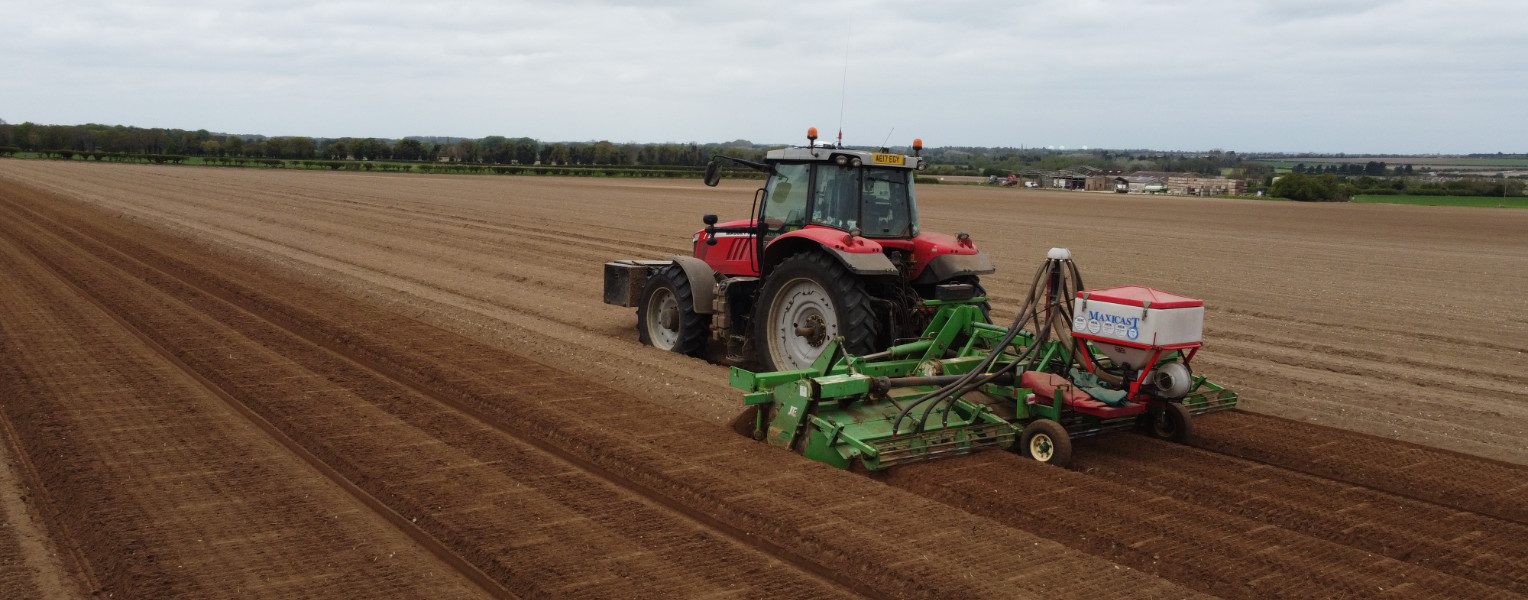Industry Knowledge: Cultivation in Commercial Root Crop Production

For establishing cereals, practices such as no-till and minimum-till farming have gained significant attention for their potential to enhance sustainability, improve soil health and reduce variable costs. However, when it comes to commercial root crop production, traditional soil cultivation remains a vital practice. Here, we explore the reasons why cultivating the soil continues to play a crucial role in producing robust and high-quality root crops.
1. Soil Structure and Root Penetration
Root crops such as carrots, potatoes, and red beet require a loose, well-aerated soil structure to allow their roots to expand freely and develop properly. The soil needs to have a relatively free-draining soil profile, free of root balls, stones and stubble.
Cultivating the soil helps break up compacted layers and creates a friable soil texture, which is essential for root penetration. Without adequate soil cultivation, root crops can become stunted, misshapen, or develop poorly due to restricted growth.
2. Seed Germination and crop emergence
The need for a fine tilth to obtain good seed-to-soil contact in a clod and stone-free environment is still paramount. A uniform seed bed will allow for accurate drilling and for the following hoeing & irrigation operations to be as efficient as possible.
Fine soil tilth ensures that seeds have excellent contact with the soil. This close contact is vital for seed germination because it allows seeds to absorb moisture uniformly from the surrounding soil. When seeds are planted in a well-prepared, finely tilled seedbed, the consistent moisture uptake promotes even germination, leading to a more uniform emergence of seedlings. In contrast, coarse or cloddy soil can create air gaps around seeds, leading to uneven moisture absorption and sporadic germination.
3. Weed Control
Weeds compete for nutrients, water, and light. While no-till and minimum-till practices often rely on herbicides for weed control, cultivation offers a mechanical method that can reduce the dependency on chemical inputs, thus promoting a more integrated approach to pest management.
Most root crop herbicides are pre-emergence. Any chemical residue needs to be spread throughout the soil profile which is aided by cultivations.
4. Disease and Pest Management
Root crops are particularly vulnerable to soil-borne diseases and pests. Cultivating the soil can help manage these issues by burying crop residues that might harbour pathogens and pests, promoting their decomposition. This practice disrupts the life cycles of soil-borne diseases and pests, reducing their prevalence and impact on subsequent crops.
5. Improved Soil Aeration and Water Infiltration
Cultivating the soil improves aeration, which is vital for root respiration and overall plant health. Moreover, cultivation helps to improve water infiltration and drainage, preventing waterlogging that can lead to root rot and other water-related issues. Proper water management is especially critical in root crop production, where excess moisture can severely impact crop quality.
6. Nutrient Incorporation
Fertilisers and organic amendments need to be thoroughly mixed into the soil to be effective. Cultivating the soil ensures that these nutrients are evenly distributed and placed within the root zone where they are most accessible to the plants. This practice enhances nutrient availability and uptake, leading to healthier and more productive root crops.
7. Crop Recovery
At harvest, the soils need to be lifted and separated cleanly from the root crop to avoid bruising and damage. Something more challenging in a no-till or non-soil inversion programme.
Balancing Tradition with Innovation
While soil cultivation remains important for the reasons mentioned, it is equally essential to balance traditional practices with innovative approaches. Integrating cover crops, crop rotations, and organic amendments can enhance soil health and sustainability in conjunction with cultivation. These practices can help maintain soil structure, reduce erosion, and promote biodiversity, creating a more resilient agricultural system.
Conclusion
In commercial root crop production, cultivating the soil is still a crucial practice. It addresses specific agronomic needs that are essential for the successful growth of root crops, including improved soil structure, weed control, disease and pest management, enhanced aeration, water infiltration, and nutrient incorporation. By thoughtfully integrating soil cultivation with sustainable practices, farmers can achieve high-quality root crops while also stewarding the land for future generations.
